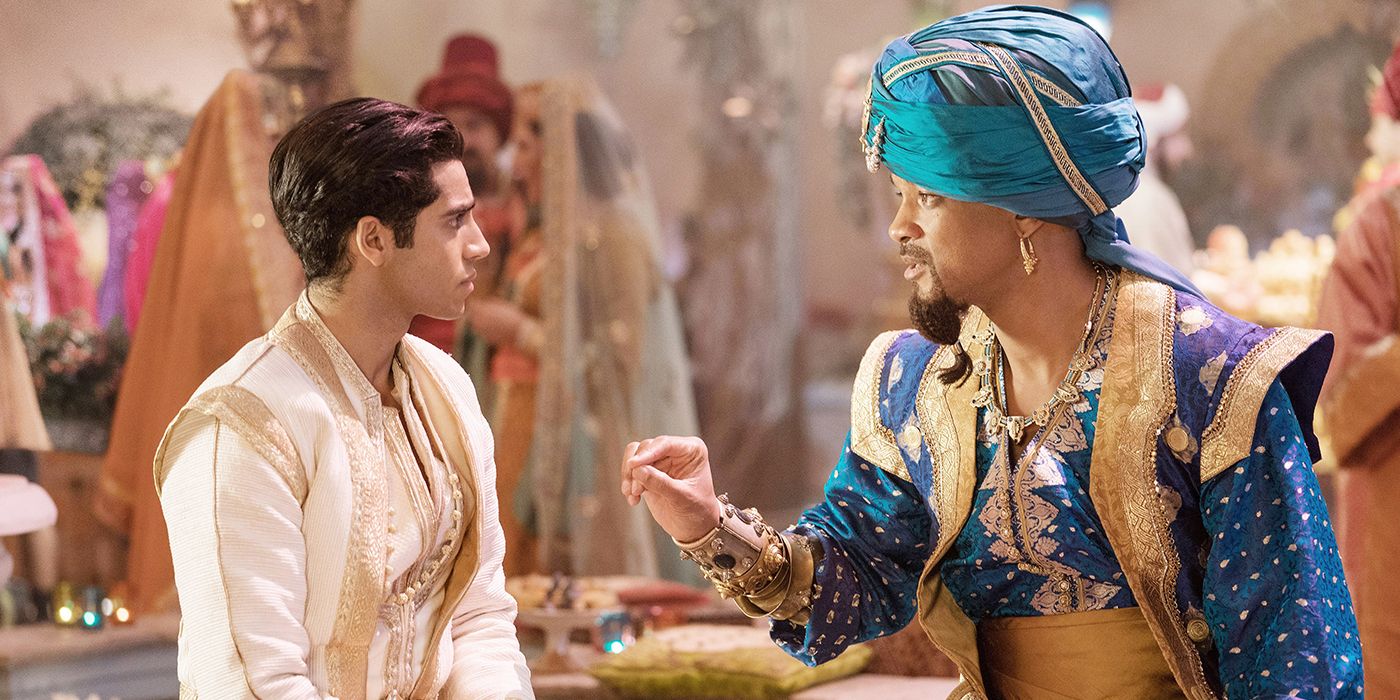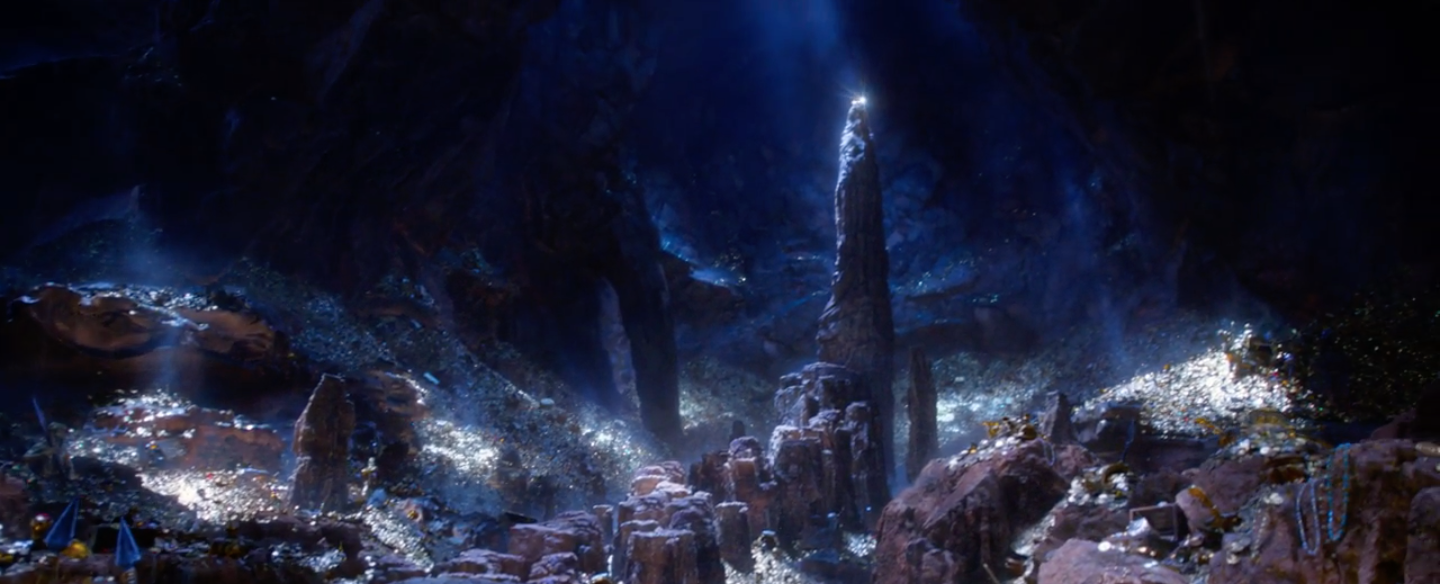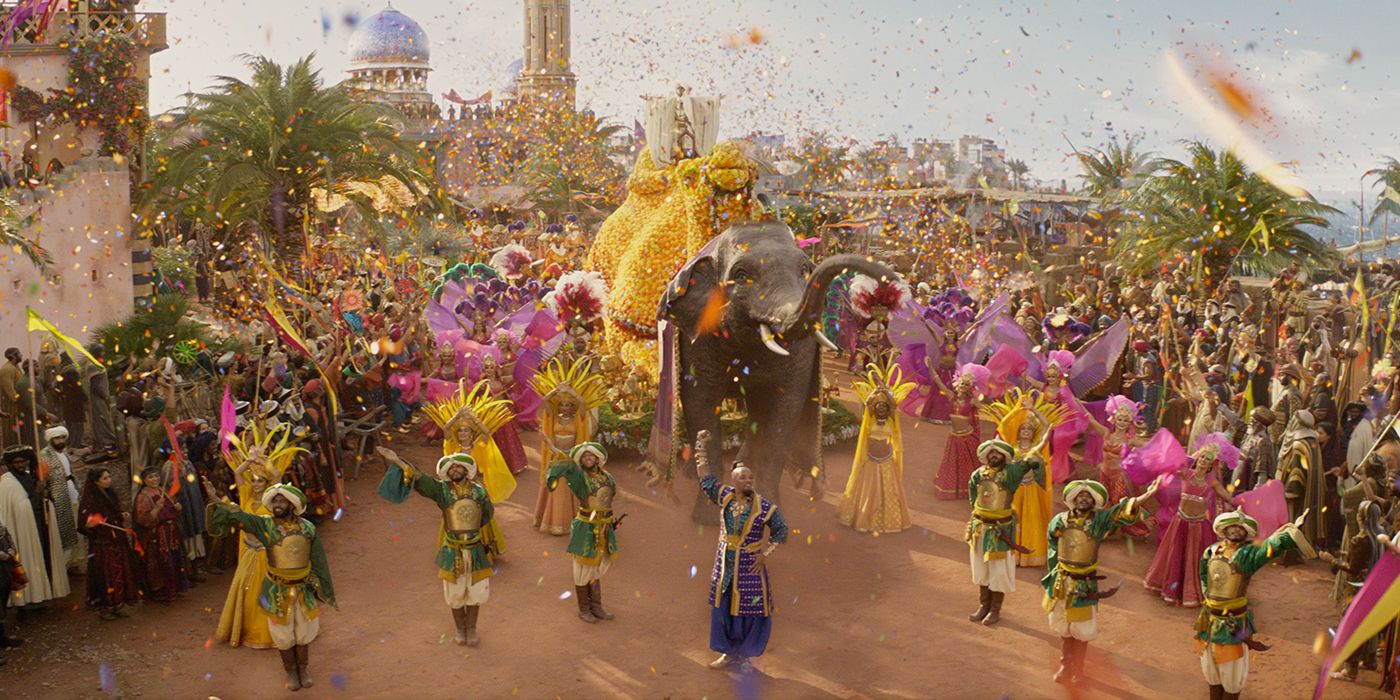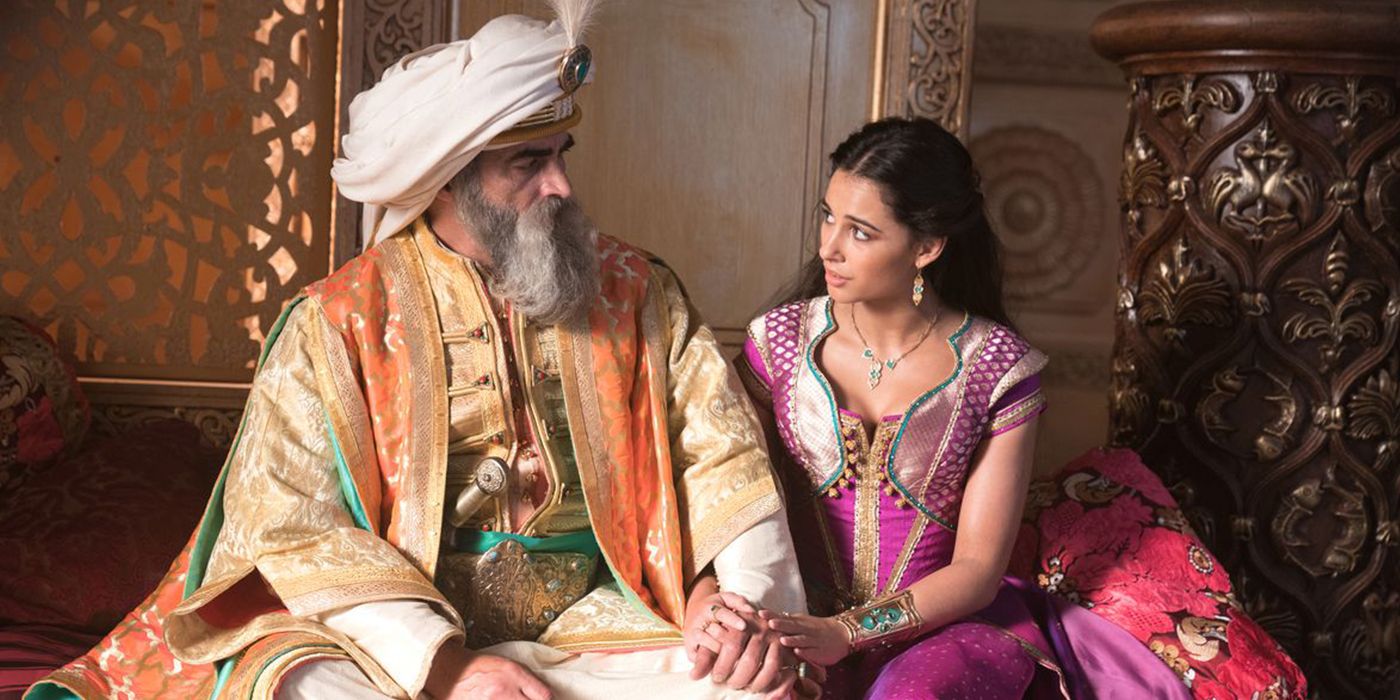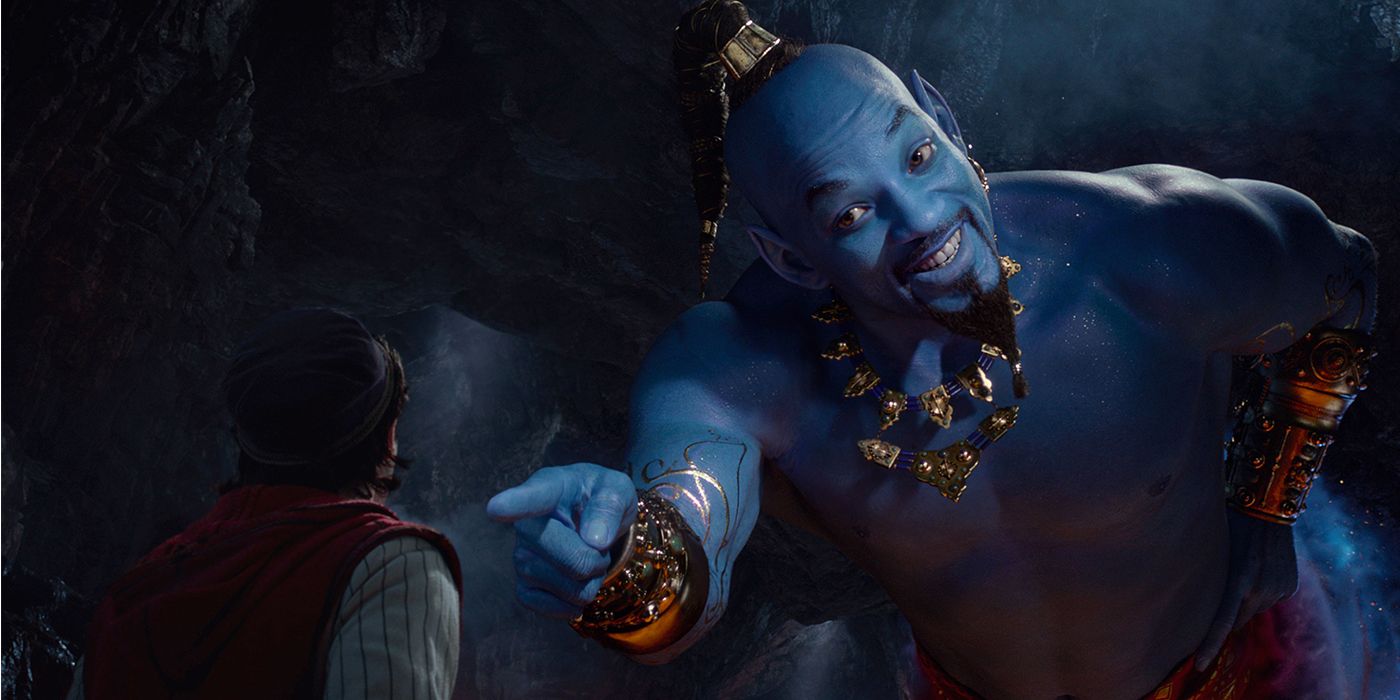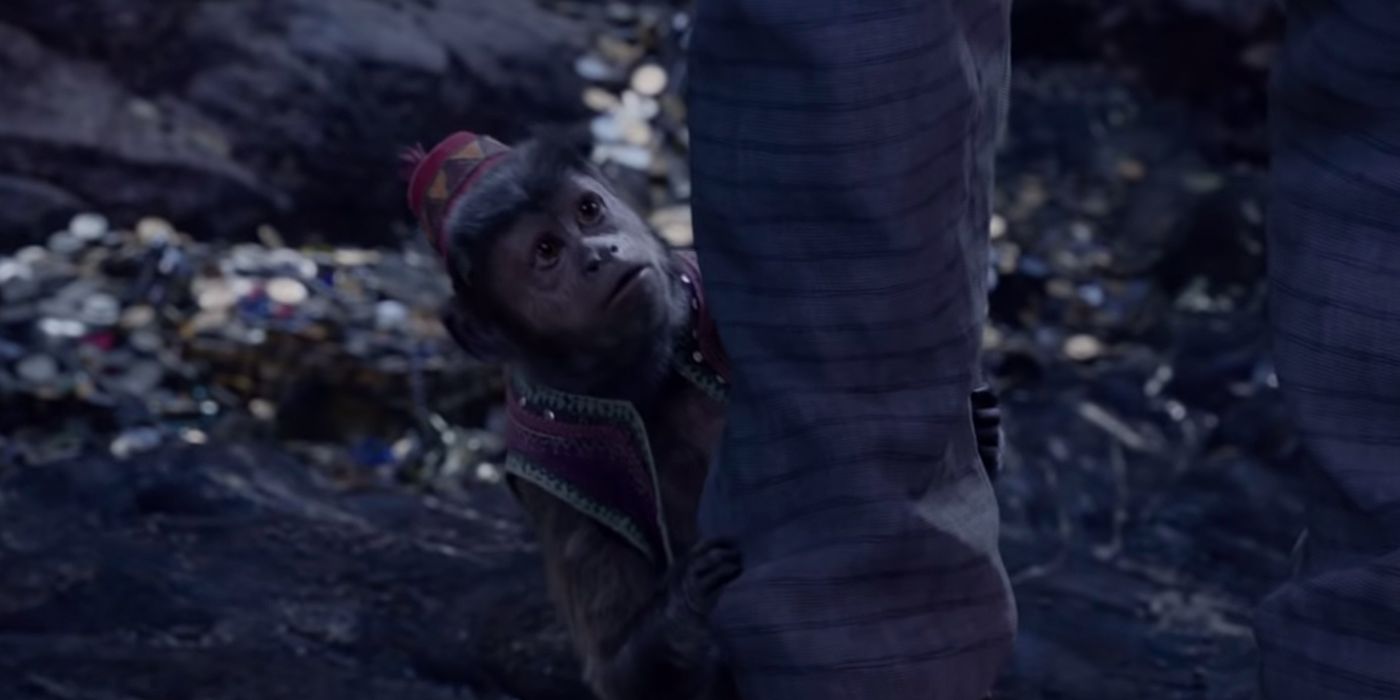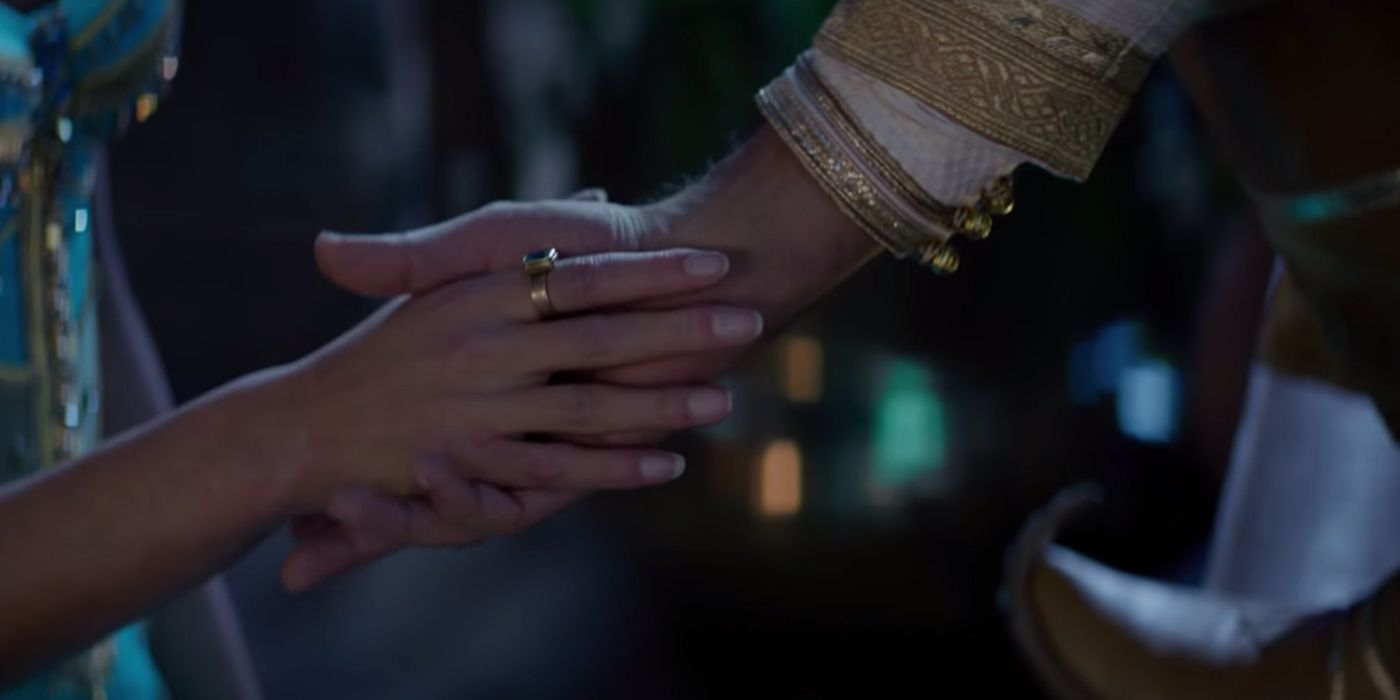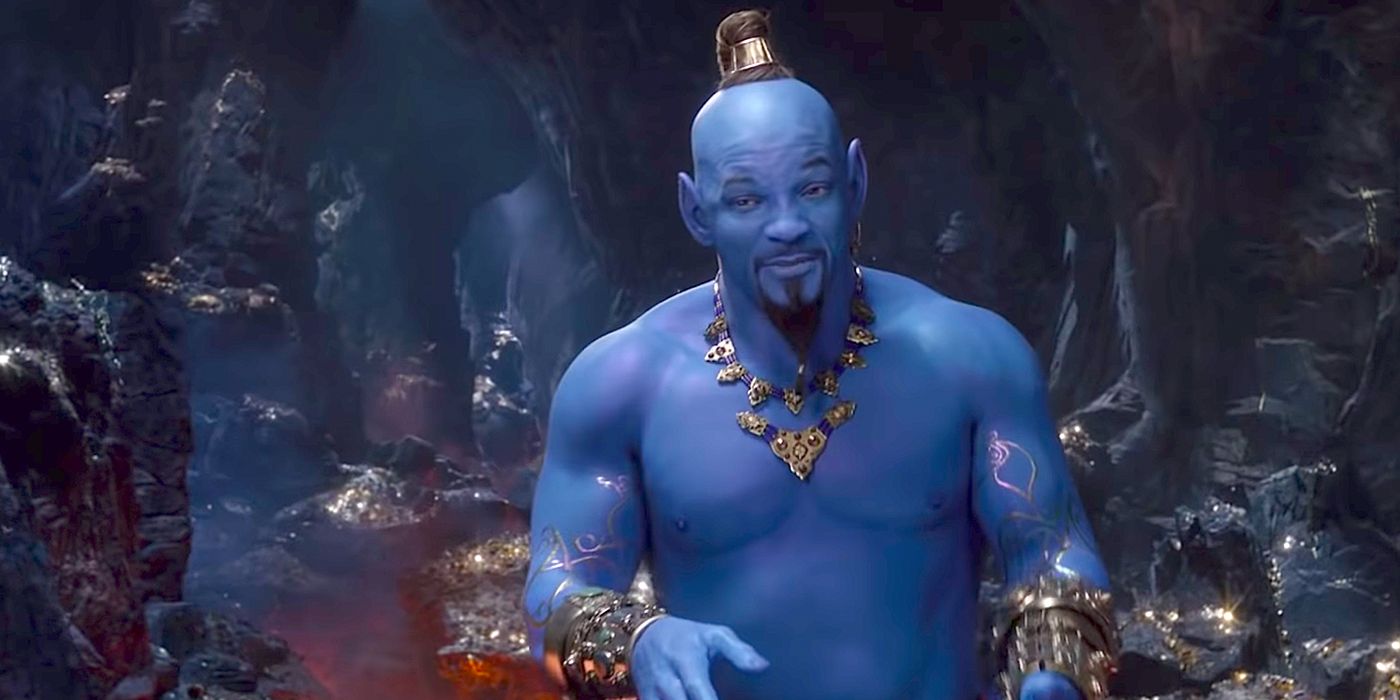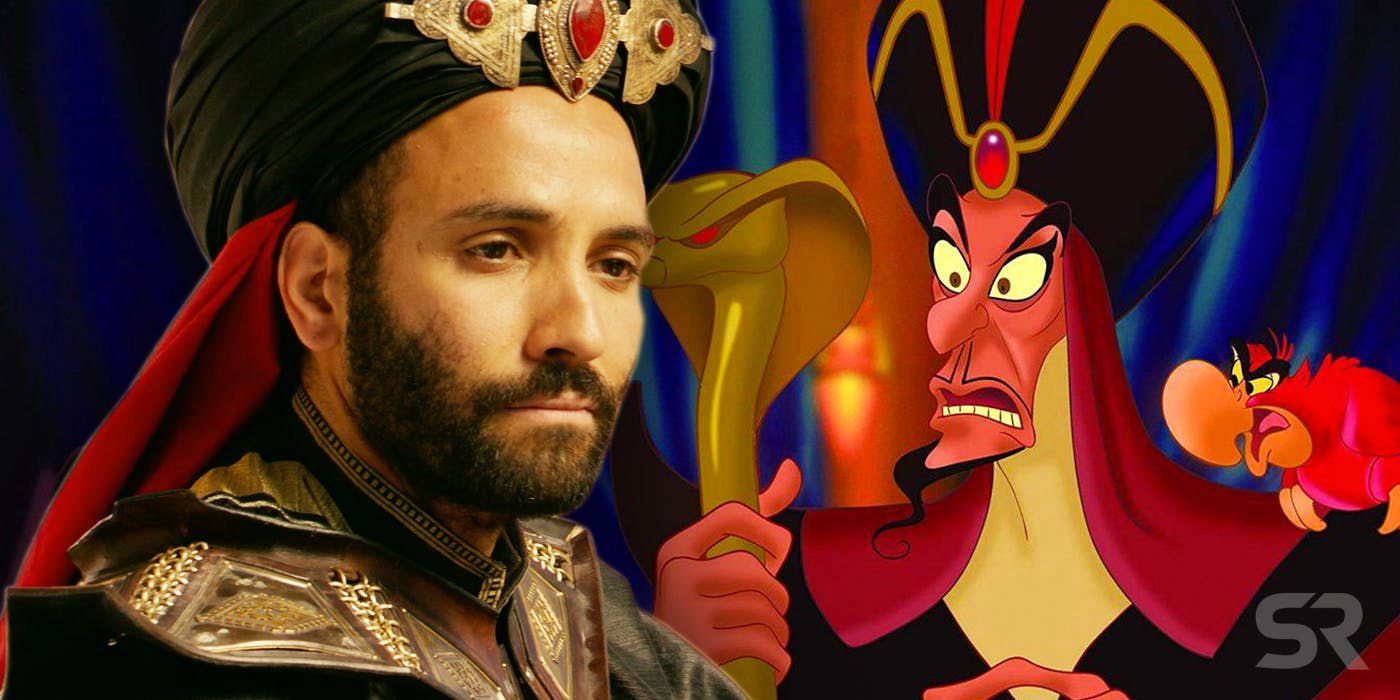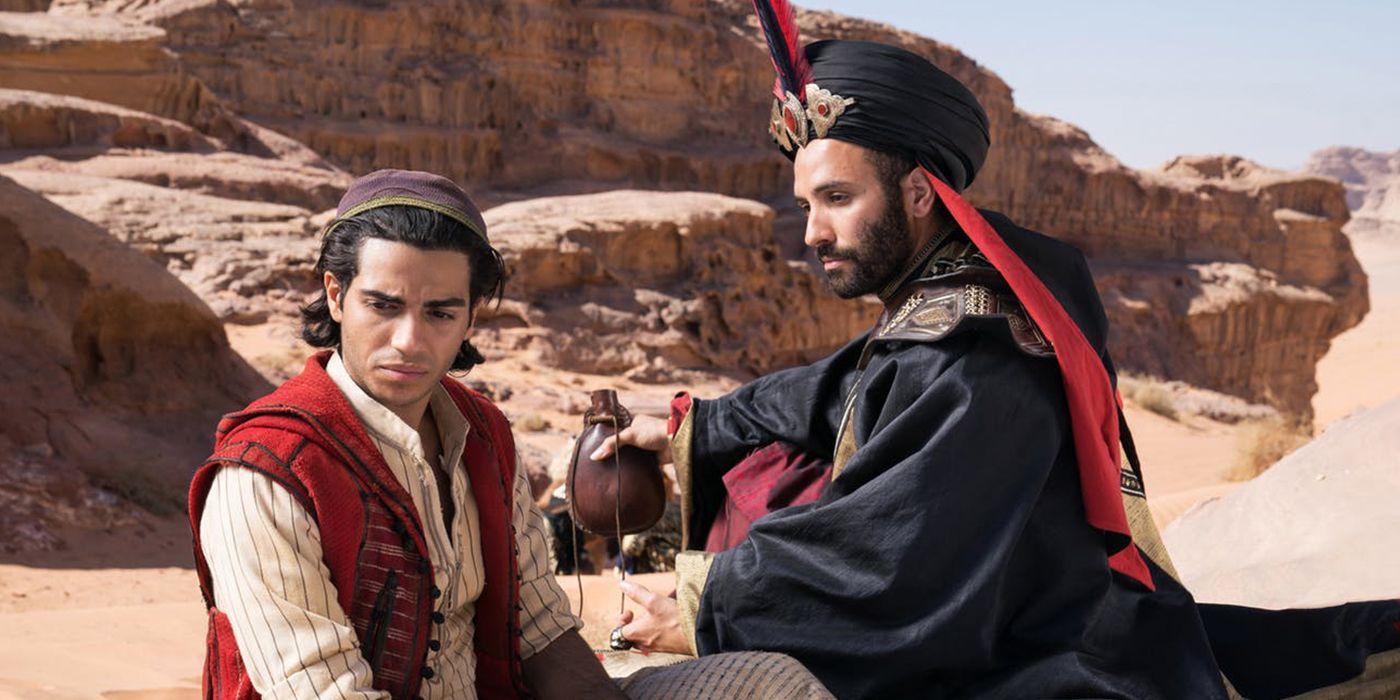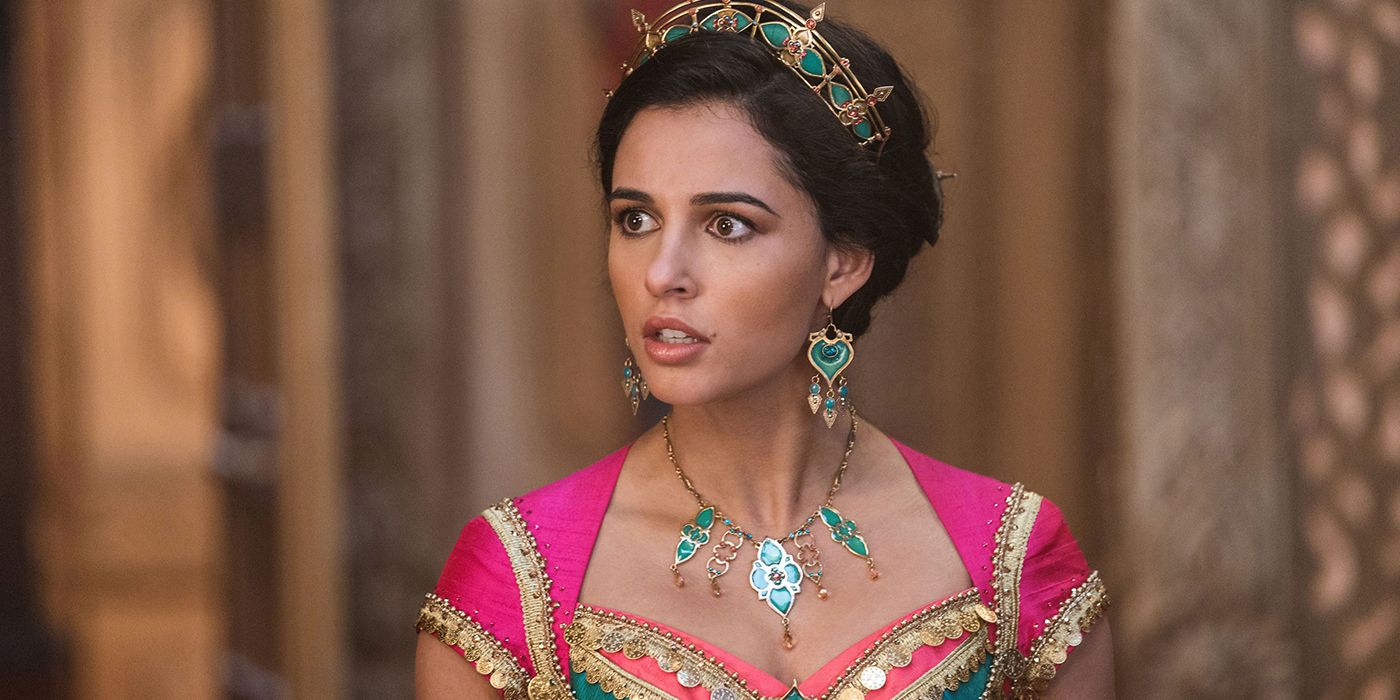Disney’s live-action remakes can’t all be described as unmitigated successes, but maybe the surprise has been Aladdin which comes along and has a really surprising opening weekend. It’s one that critics are finding hard to justify giving any star rating because Guy Ritchie’s interpretation of everyone’s favorite street rat is such a mixed bag. There’s a lot to love about the film, but there’s just as much that doesn’t quite do the 1992 Disney animated classic justice. So with that in mind, here are five things we think the live action Aladdin does better and five things it does worse.
Warning - a bunch of Cave of Wonders-sized spoilers lie ahead.
Worse: The Cave of Wonders
Thanks to VFX, audiences can now be transported to other worlds with a surprising amount of verisimilitude. So, going into Aladdin, you might think that the cave of wonders is going to be this big sumptuous, embarrassment of riches—something that would dwarf the visuals of the piles of gold and jewels in the animated version.
But unfortunately, that’s not the case. Audiences can’t forget that this scene is taking place in a cave because the sequences are dark and uninspiring. It’s hard to see why Abu or Aladdin are even tempted to steal anything considering the lamp is by far the impressive-looking thing in the entire scene—and that’s only because it’s got a bit of light shining on it.
Better: Music and Score
Listening back to the songs from the animated movie, it’s absolutely the voice actors that make them the iconic Disney singalongs that they are. The music itself is quite flat; something that’s absolutely not the case in the live action remake. Alan Menken’s score achieves something that even the Broadway musical couldn’t, creating a musical journey that’s incredibly elaborate and is so well arranged that it has a really big impact. He revisits and reprises the melodies of the movie’s most recognizable themes in really interesting ways—like the Genie’s Friend Like Me motif, which is revisited several times as Will Smith performs magic.
Worse: The Sultan
One character that’s done a disservice is the Sultan of Agrabah. While he might not have that much to do in the animated movie, he’s at least acts as great comic relief and stands up to Jafar when he needs to. But in the remake he’s a bit bland; he gets even less to do and doesn’t even have any comedy about him. He’s supposed to be the leader of a small country, but his daughter has a much stronger head about her. So, by the time Jafar starts to throw his weight around after getting his hands on the lamp, honestly, you’re starting to wonder why this hadn’t happened sooner.
Better: The Aladdin/Genie Relationship
In 1992’s Aladdin, the relationship between the titular character and the Genie is something of a protector/protected one. Guy Ritchie’s reinvention, on the other hand, presents a real bond and a friendship between them. You don’t feel as though what the genie does is through a sense of duty but instead because he feels genuine affection for Aladdin.
And the same goes for the other way around; the characters’ relationship is far less transactional than what it was previously. This makes what Aladdin does at the end, setting the Genie free much more impactful because you can tell his character development is complete, and he wants to do something completely selfless for his friend.
Worse: The Sidekicks
Disney animated films so often do sidekicks brilliantly and Aladdin might be up there with the best of them. From Abu and the Magic Carpet to Rajah and Iago, there are so many brilliant moments in the animated feature where these characters shine. But, much like this year’s Dumbo, where Tim Burton did away with the character of Timothy Q. Mouse, Guy Ritchie’s sidekicks don’t get the screen time or have anything good to do—maybe with the exception of the carpet who given a slither of character, despite being… well, a carpet. Abu is seen throughout pinching pockets, but he’s also dismissed by Aladdin as ‘just a monkey’ on more than one occasion. And Rajah the tiger basically gets nothing to do apart from growling every so often. The long and the short of it is this film needed more of the sidekicks.
Better: The Magic Carpet Ride
The live-action remake has this iconic sequence on point. And not just because the animated Aladdin and Jasmine would need to hit completely unrealistic speeds on their magic carpet to fly around the world as they did in the first outing of A Whole New World. The sequence is perhaps the pinnacle of the new movie, as the visuals and music all come together to create something really memorable. And that’s without mentioning the chemistry between the characters. This is the point where you can really see the connection between Aladdin and Jasmine. Any criticism the remake has received should almost be worth it just to get this moment.
Worse: Genie’s Songs
Will Smith is a TV and movie icon—there are no two ways about it. But it’s always going to be difficult to reprise a role that was so iconically played by someone else. Smith needed to be careful to walk his own path and not imitate Robin Williams, but he’s not quite achieved that. As he performs Friend Like Me and Prince Ali, there are many moments that could be argued to be nods to Williams’ performance as the big blue Genie, but instead come across as cheap impersonations. Every so often, the Will Smith that we know and love gets to shine through and he makes sections of the songs his own. But he should have been given far more license to do his own thing. If you’ve got someone as magnetic as Will Smith, why wouldn’t you use him to his fullest potential instead of getting him to copy what’s come before?
Better: Jafar’s Villainy
Because they’re family films, a lot of Disney’s animated villains are more comical than they are just plain bad. But Marwan Kenzari’s Jafar in the new movie is quite the opposite. From the get-go, it seems as though he’s the typical bad guy who wants to be in charge for egotistical reasons but you quickly realize that he’s far more dangerous than that. Jafar’s conversations with the Sultan here are about war and invading other cities and nations, while the animated villain just talks about giving himself power without any real understanding of what he’d do with it if he got it. On the initial casting news and marketing, there was a question as to whether this Jafar looked right, but kudos to Kenzari who, on screen, gives us a truly unlikable villain.
Worse: Jafar’s Genie
The big, visual ending is quite something in the Disney animated classic, but in Guy Ritchie’s movie, it doesn’t quite land. Spoiler alert, but when Jafar is turned in to an all-powerful genie, the visuals are a bit lacking, and the impact just isn’t quite there. Watching the animated version even now, seeing Jafar as a big red, almost devil-like genie is a terrifying spectacle, while the remake reduces the character that we’ve come to loathe into something far less scary thanks to some less-than-brilliant VFX work.
Better: Princess Jasmine
Princess Jasmine is a much more substantial character in Guy Ritchie’s adaptation and is frankly a much better role model for any young girls watching. In the animated movie, she’s fairly 2D; refusing a suitor but not really giving any explanation as to what her motivations are for doing so.
But Jasmine 2.0 is the most dynamic character in Aladdin. She’s strong in her belief that she can make a difference to the people of Agrabah, and as such, doesn’t need to be married to a prince who can rule in her stead. Naomi Scott brings so much more than talk, she acts on her principles, standing up to Jafar in a way she doesn’t do in the animated movie. Disney Princesses are icons that little girls look up to and for them to be reinvented in this way is a brilliant move forward.

